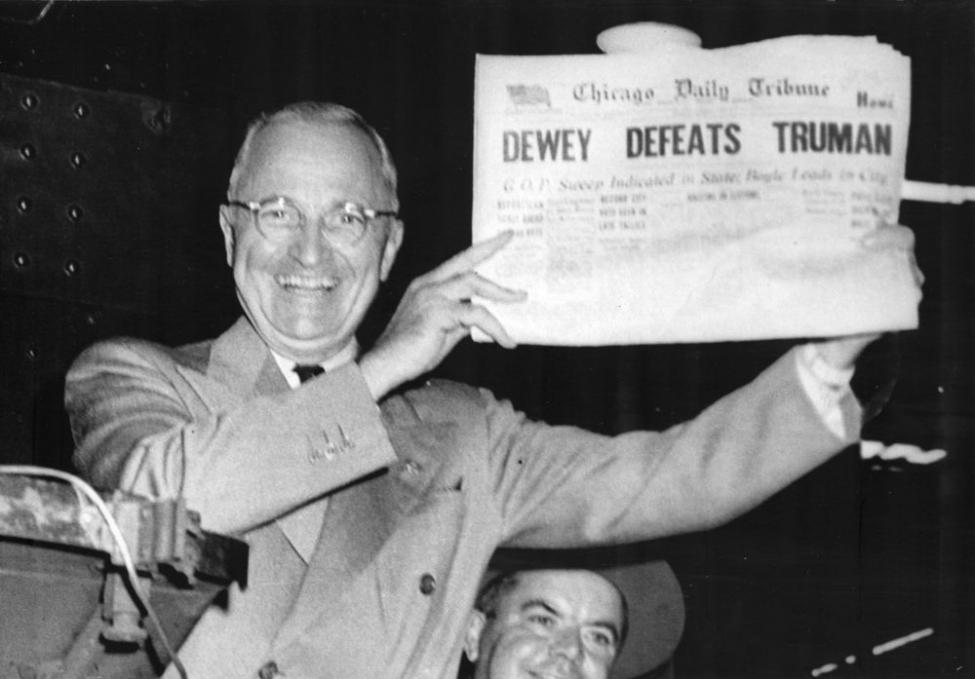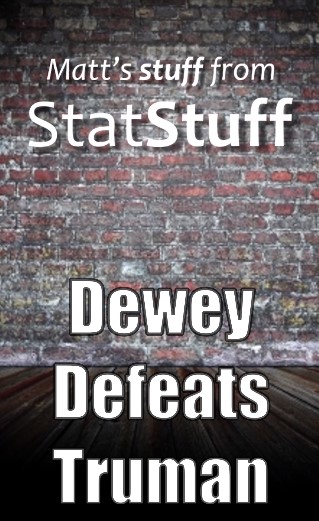Video Transcript
 Have you ever seen this famous photo? It's from the 1948 election where after election day, Harry Truman is holding up the Chicago Tribune that wrongly announced that the Republican candidate Dewey defeated him. But do you know why the Tribune got this wrong?
Have you ever seen this famous photo? It's from the 1948 election where after election day, Harry Truman is holding up the Chicago Tribune that wrongly announced that the Republican candidate Dewey defeated him. But do you know why the Tribune got this wrong?
Despite their headline blunder, the Tribune actually did a good job in their statistical analysis. They surveyed enough people to get a good sample size, they normalized the survey respondents with the right demographics across the US at that time, and they correctly analyzed the data they collected. So why were their conclusions so wrong?
Since it was election night, they simply called people across the US to find out who they voted for. Makes sense, right? But what they didn't consider is that most people in the US didn't have telephones in 1948; they were mostly owned by wealthy people who tended to be Republican. So they unintentionally biased their data by primarily calling Republicans who naturally voted for Dewey, the Republican candidate.
So what can we learn from this? We already know it's important to have unbiased data, but we also need to consider HOW we collect that data . It doesn't matter how good we are at doing statistical analysis if we can't ensure the data we're analyzing is completely unbiased, including what method we use to collect that data.


